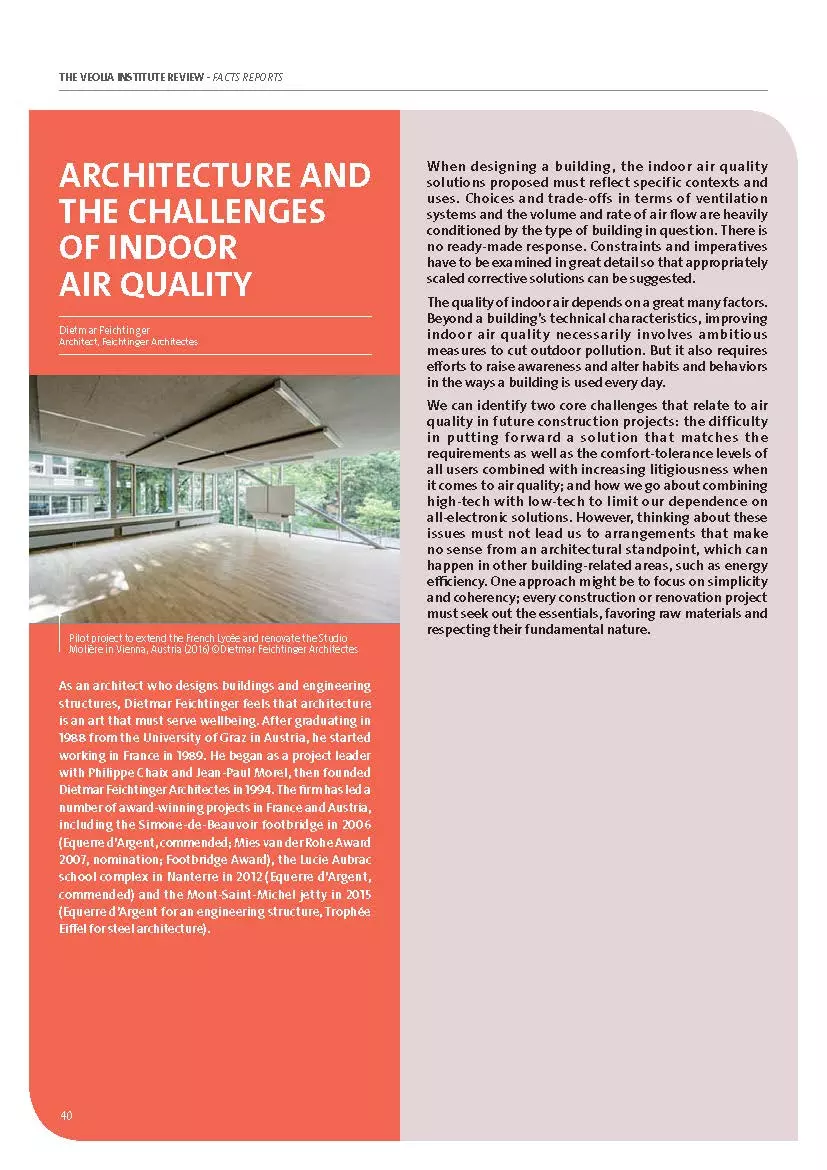Dietmar Feichtinger
Architect, Feichtinger Architectes
When designing a building, the indoor air quality solutions proposed must reflect specific contexts and uses. Choices and trade-offs in terms of ventilation systems and the volume and rate of air fl ow are heavily conditioned by the type of building in question. There is no ready-made response. Constraints and imperatives have to be examined in great detail so that appropriately scaled corrective solutions can be suggested.
The quality of indoor air depends on a great many factors. Beyond a building’s technical characteristics, improving indoor air quality necessarily involves ambitious measures to cut outdoor pollution. But it also requires efforts to raise awareness and alter habits and behaviors in the ways a building is used every day.
We can identify two core challenges that relate to air quality in future construction projects: the difficulty in putting forward a solution that matches the requirements as well as the comfort-tolerance levels of all users combined with increasing litigiousness when it comes to air quality; and how we go about combining high-tech with low-tech to limit our dependence on all-electronic solutions. However, thinking about these issues must not lead us to arrangements that make no sense from an architectural standpoint, which can happen in other building-related areas, such as energy efficiency. One approach might be to focus on simplicity and coherency; every construction or renovation project must seek out the essentials, favoring raw materials and respecting their fundamental nature.



